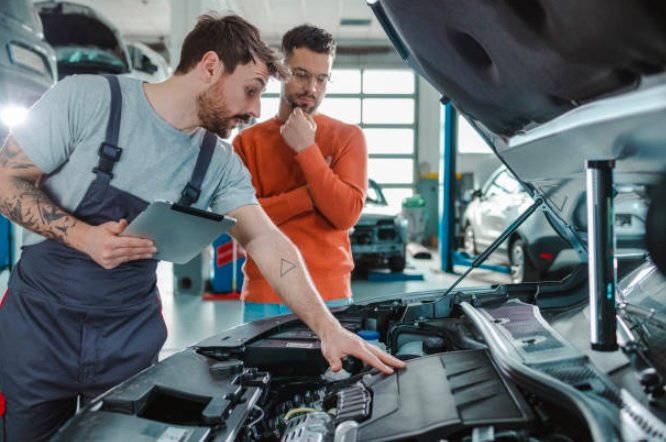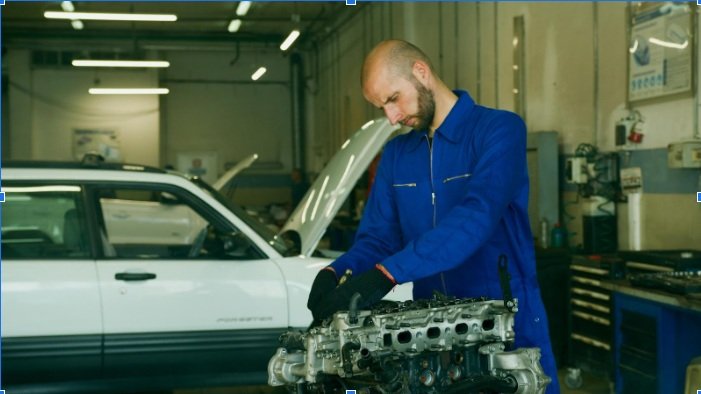Experiencing a vehicle breakdown can be frustrating, especially if it happens in an unfamiliar area or during poor weather. Whether it’s a flat tire, engine trouble, or an accident, waiting for a tow truck often becomes part of the process. However, knowing what to do during this time can make the experience safer and less stressful. Drivers in Arizona searching for towing Scottsdale services are often already dealing with vehicle issues, and safety, communication, and preparation become top priorities while they wait for help to arrive. Here are essential steps every driver should follow during this critical window of time.
Move to a Safe Location: Stay in the Car or Move to a Safe Spot Away from Traffic
One of the first priorities after a breakdown is getting to a safe place. Remaining in a high-traffic zone puts you and other drivers at risk, especially at night or during inclement weather.
- Pull Over Carefully: If the vehicle is still operable, steer it toward the shoulder of the road or a nearby parking lot. Avoid curves and hills where visibility is limited, and always aim for a spot that provides enough space for a tow truck to reach you safely.
- Stay Inside When Appropriate: In high-speed traffic areas, such as highways, it’s usually safer to remain inside the vehicle with your seatbelt on. This minimizes the risk of injury from passing cars.
- Exit if Needed for Safety: If staying inside feels unsafe due to nearby hazards, exit the vehicle cautiously from the passenger side and stand away from the roadway, ideally behind a guardrail or barrier.
Turn on Hazard Lights: Increase Visibility for Other Drivers
Visibility is key in any roadside situation. Turning on your vehicle’s hazard lights alerts other motorists that your vehicle is stopped and may not be moving anytime soon.
- Activate Immediately: As soon as your vehicle begins to slow down, turn on the hazard lights to alert others. This is especially important in areas with heavy traffic or limited lighting.
- Use Additional Safety Items: If available, place reflective triangles or road flares several feet behind your vehicle to further improve visibility for oncoming traffic.
- Keep the Lights On Until Help Arrives: Maintain the lights until the tow truck operator is on the scene. This ensures your vehicle remains visible from a distance, reducing the risk of accidents.
Stay Calm and Alert: Be Aware of Your Surroundings and Wait Patiently
Breakdowns can be stressful, but panic only makes the situation worse. Staying calm allows drivers to make rational decisions and stay alert to what’s happening around them.
- Avoid Unnecessary Movement: Once in a safe position, limit movement around the vehicle. Wandering onto the road or pacing in traffic zones increases the risk of injury.
- Be Alert to Strangers: While many people have good intentions, it’s wise to be cautious if approached by strangers. Roll down the window slightly and remain inside if unsure. Never accept rides from unverified individuals.
- Monitor the Environment: Keep an eye on approaching traffic, changing weather conditions, or any unusual activity. This awareness can help you respond quickly to new developments before the tow truck arrives.
Gather Important Documents: License, Registration, and Insurance Info
Having your documents ready helps expedite the towing process and keeps everything organized should you need to file a claim or report the incident.
- Retrieve Personal ID and Vehicle Paperwork: Locate your driver’s license, vehicle registration, and insurance card. These documents may be needed by the tow truck driver or law enforcement, especially after an accident.
- Take Photos of the Scene: Use your phone to document the vehicle’s condition, nearby landmarks, and any damage. These photos may be useful if questions arise later regarding insurance coverage or liability.
- Pack Essentials Before Leaving the Vehicle: If you need to leave your vehicle, take valuables and necessary items such as your phone, charger, and keys with you. This avoids complications later.
Communicate Clearly with the Tow Company: Confirm Location and Issue
Clear communication with the towing company is crucial. The more information you provide, the faster and more efficient the service will be.
- Provide Precise Location Details: Use your phone’s GPS or note landmarks, mile markers, or cross streets to tell the dispatcher exactly where you are. This avoids delays in locating your vehicle.
- Describe the Problem Accurately: Let the tow operator know if your car has a flat tire, or engine issue, or was involved in an accident. The type of issue may determine what kind of tow truck or tools they bring.
- Confirm Estimated Arrival Time: Ask for a timeframe and confirm that the company will call or text when the driver is en route. Knowing when to expect assistance can ease anxiety and help you plan your next steps.
Conclusion
No one plans to be stranded on the roadside, but knowing what to do while waiting for a tow truck can significantly improve safety and reduce stress. Moving to a safe location, making yourself visible, staying calm, and being prepared with documents and accurate communication all contribute to a smoother experience. These steps are not just helpful, they’re also essential for ensuring both personal safety and efficient service. For drivers searching Glendale towing solutions, being ready and informed means they’re not just waiting, they’re managing the situation responsibly until help arrives.
Refresh Date: August 22, 2025



